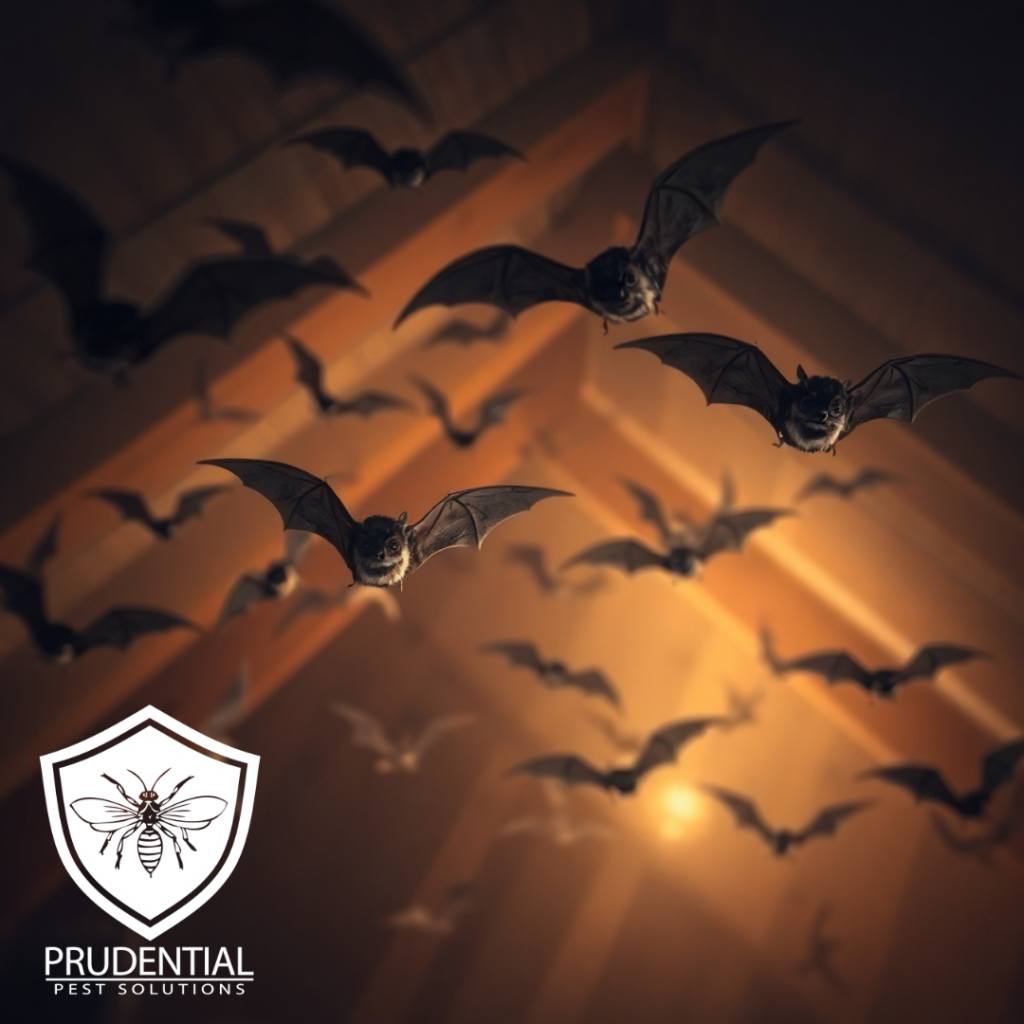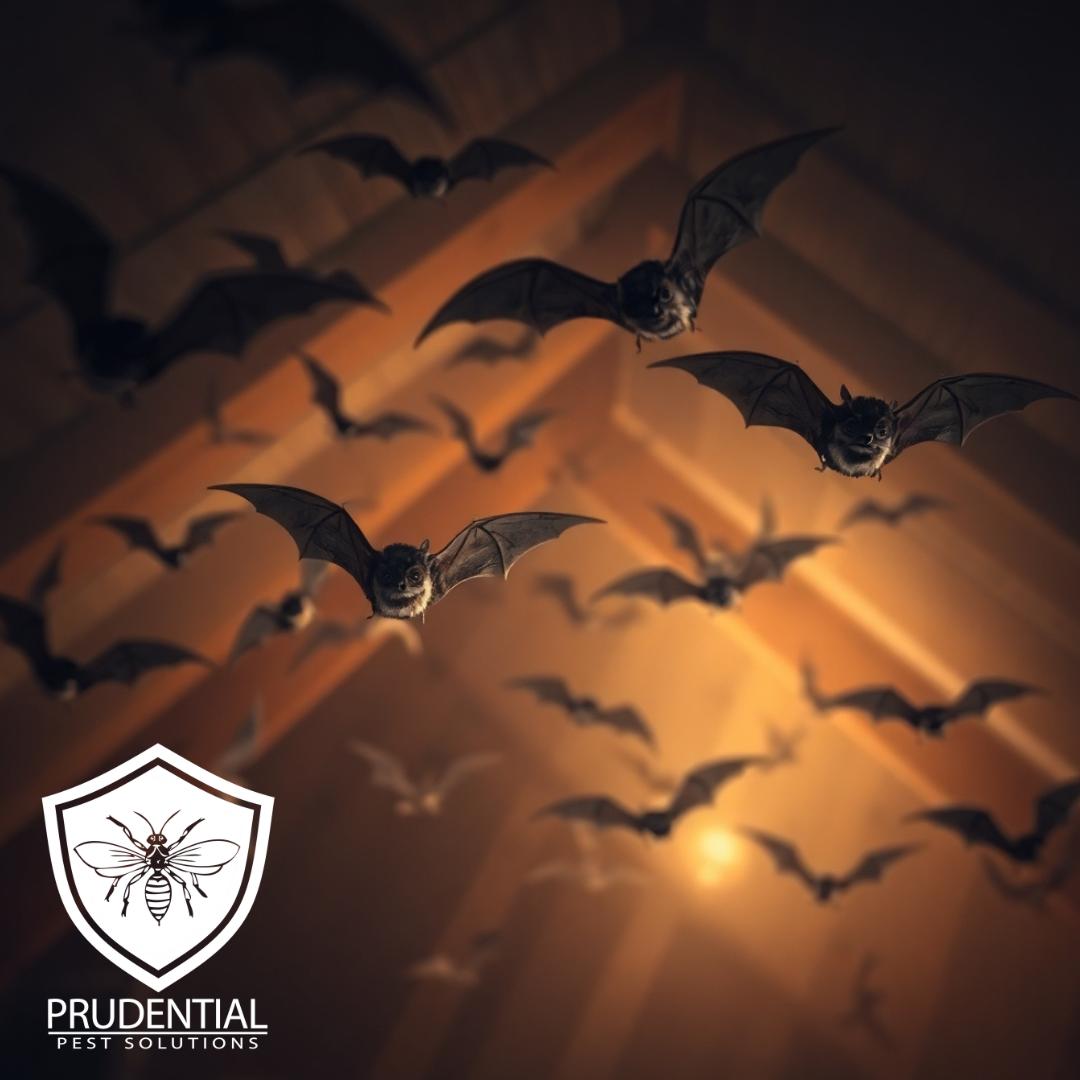This is part 2 of a 2 part series on a bat in the house. Part 1 can be found here.

So you’ve just successfully evicted that lone bat that you found flying around inside of your house. Your sense of accomplishment and rush of adventure have faded a bit as you lie in bed attempting to fall asleep after the bat ordeal. One nagging question keeps you from falling asleep: “How did that bat get in here?”. In this article we will investigate some common ways for bats to enter a structure.
Check all of the windows in your home. Sometimes when opening a window, the top part of the window will drop down a bit allowing a bat to enter. Sometimes a door was left open and a bat came in. If you have checked all of your windows and doors and are convinced that the bat entered another way or if you have had more than one bat in the house recently, continue below.
First, let’s determine the severity of your situation. Do you have a colony of bats living in your home or did a lone bat enter your livable space? If you have an attic, go into the attic and look around. If you see a pile of rodent sized droppings in concentrated areas of the attic, then you have a colony of bats. Bat droppings look like rodent droppings but are a little longer and will accumulate in piles. If you see a few bat droppings, then you probably have less than 5 bats living in the attic space. If you see no evidence of droppings in the attic, then the bat probably entered the house through another way.
Bat colonies should never be exterminated, and should almost always be evicted by a professional.
Bats, like mice, can enter a structure through very small openings. Often these entrances are less than half an inch. Unlike mice though, bats will not chew or cause damage to enter a structure. The bats will only exploit an already existing hole, gap, or crevice to enter a structure. Bats often will enter the attic space through gaps in the fascia board, where roof pitches meet, gable vents, other attic vents, and chimneys. A suspected opening will show some staining where the bats have been coming and going for a period of time.
A professional wildlife eviction for bats will include identifying the primary entrance point and installing a bat excluding device. This device allows the bats to leave but not re-enter the structure. This technique is only effective if the whole house is sealed up. This involves the professional sealing, caulking, and flashing current and future vulnerable areas where bats or other wildlife can enter the structure. Once all of the bats have been evicted, usually 1-3 weeks, the bat device is removed and the remaining opening is sealed shut.
Removal of the bat droppings in the attic should be handled by a wildlife specialist. Bat droppings are considered hazardous materials and should be treated as such. Our removals involve chemically treating the droppings and then removing the droppings using a special HEPA vacuum system. Proper protective equipment should be worn at all times including respirators, suits, gloves, and head covers.
Once the bats have been evicted and the droppings properly treated and removed, we always treat for bed bugs. Wait, why bed bugs? One particular type of insect commonly found with bat infestations is the bat bug. The bat bug is a direct cousin of the bed bug and like its cousin, it feeds on blood. The bat bugs primary food source are the bats they live with. Once the bats are evicted, the bat bugs do not simply leave. The bat bugs seek out a new food source, and that happens to be the occupants of the home. Treating the attic space and the home with an insecticide can prevent an infestation from happening.
Bat evictions and cleanups are among some of the pricier jobs that you will pay a wildlife specialist to handle but it is worth every penny.

Comments are closed